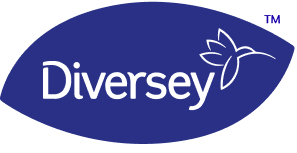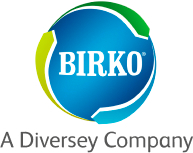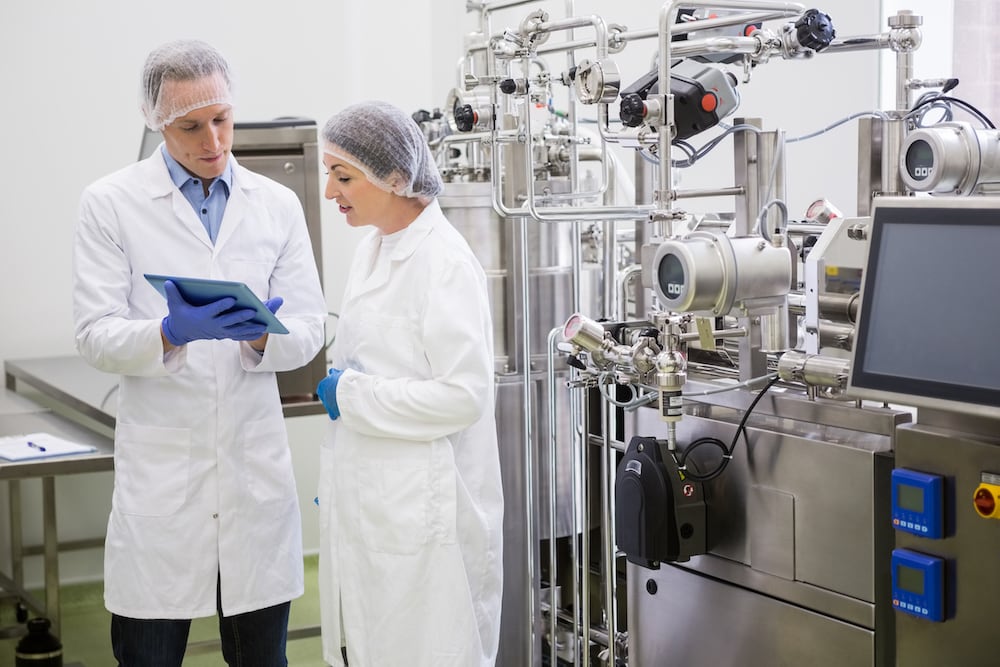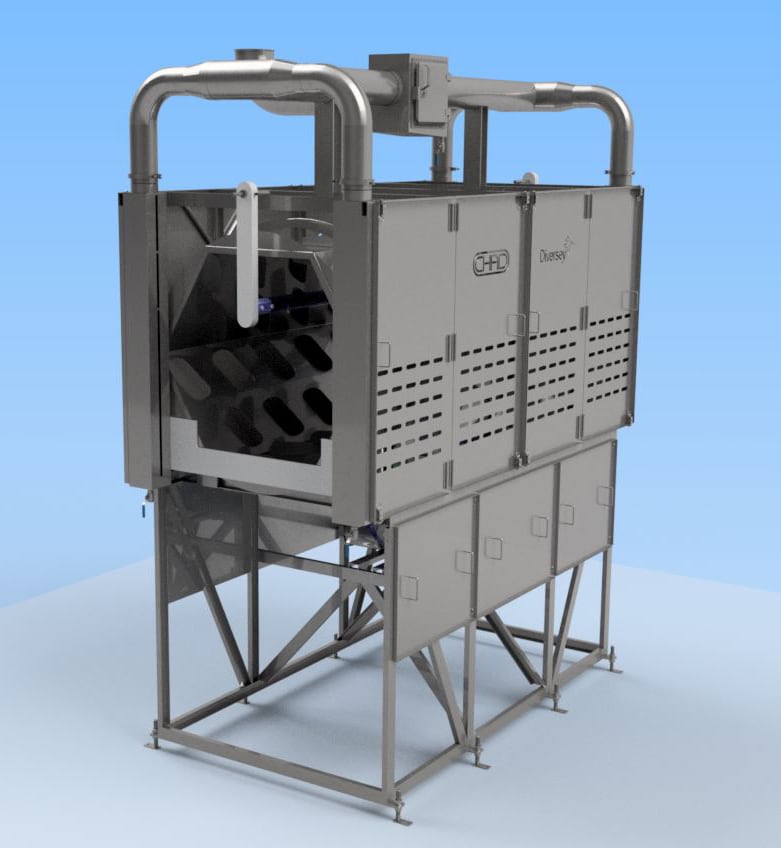Before we get into common food safety acronyms found in SDS, we should first explain what SDS stands for: A Safety Data Sheet (SDS) is a document that chemical providers are required by law to provide to customers that buy any potentially hazardous chemical. Your company will have two hard copy sets of SDSs: one accessible to the workers, and also a copy in an office that workers may or may not be able to access.
These documents are full of acronyms and terms. If you don’t understand them, they’re essentially meaningless, so I’ve outlined below some of the most frequently used acronyms and terms used by chemical manufacturers in their MSDS.
Acronyms Commonly Found in Food Safety Documents
- ACGIH®: American Conference of Governmental Industrial Hygienists. ACGIH® is a member-based organization that advances occupational and environmental health and safety. ACGIH® establishes recommended occupational exposure limits, such as the Threshold Limit Value (TLV) for chemical substances and physical agents.
- AIHA®: American Industrial Hygiene Association®. AIHA is one of the largest international associations serving the needs of occupational and environmental health and safety professionals practicing industrial hygiene in industry, government, labor, academic institutions, and independent organizations.
- ANSI: American National Standards Institute. ANSI acts as the voice of the U.S. standards and conformity assessment system. The Institute oversees the creation, promulgation and use of thousands of norms and guidelines that directly impact businesses in nearly every sector.
- ASTM: American Society for Testing and Materials. ASTM International is one of the largest voluntary standards development organizations in the world—a trusted source for technical standards for materials, products, systems, and services.
- BP: The Boiling Point of an element or a substance is the temperature at which the vapor pressure of the liquid equals the environmental pressure surrounding the liquid. This is the temperature at which a liquid changes to a vapor state at a given pressure.
- CAA: Clean Air Act is the law that defines EPA’s responsibilities for protecting and improving the nation’s air quality and the stratospheric ozone layer. The last major change in the law was the Clean Air Act Amendments of 1990. Legislation passed since then has made several minor changes.
- CAS®: Chemical Abstracts Service. A division of the American Chemical Society, CAS registry numbers (CAS numbers) are unique numerical identifiers for chemical elements, compounds, polymers, biological sequences, mixtures and alloys.
- cc: cubic centimeter, a volume measurement in the metric system that is nearly the same capacity as one milliliter (ml).
- CERCLA: Comprehensive Environmental Response, Compensation, and Liability Act. Commonly known as Superfund, it was enacted by Congress on December 11, 1980. This law created a tax on the chemical and petroleum industries and provided broad federal authority to respond directly to releases or threatened releases of hazardous substances that may endanger public health or the environment.
- CFR: Code of Federal Regulations is the codification of the general and permanent rules published in the Federal Register by the executive departments and agencies of the federal government. It is divided into 50 titles that represent broad areas subject to federal regulation. Each volume of the CFR is updated once each calendar year and issued on a quarterly basis.
- CHEMTREC: Chemical Transportation Emergency Center is dedicated to assisting emergency responders with incidents involving hazardous materials and dangerous goods. CHEMTREC also helps shippers of hazardous materials comply with government regulations, such as U.S. Department of Transportation (DOT) regulation 49 CFR § 172.604.
- CWA: Clean Water ACT. Administered by the Environmental Protection Agency, the CWA was enacted to regulate/reduce water pollution and is the cornerstone of surface water quality protection in the United States. (The Act does not deal directly with ground water or with water quantity issues.)
- DOL: U.S. Department of Labor fosters and promotes the welfare of job seekers, wage earners, and retirees of the United States by improving their working conditions, advancing their opportunities for profitable employment, protecting their retirement and health care benefits, helping employers find workers, strengthening free collective bargaining, and tracking changes in employment, prices, and other national economic measurements. OSHA and MSHA are part of DOL.
- DOT: U.S. Department of Transportation. Many transportation agencies fall under the DOT. The U.S. DOT regulates transportation of chemicals and other substances.
- f/cc: Fibers per cubic centimeter (c3) of air.
- FDA: U.S. Food and Drug Administration is responsible for advancing public health by helping to speed innovations that make medicines and foods more effective, safer, and more affordable; and helping the public get the accurate, science-based information they need to use medicines and foods to improve their health.
- FIFRA: Federal Insecticide, Fungicide, and Rodenticide Act requires that certain useful poisons, such as chemical pesticides, sold to the public contain labels that carry health hazard warnings to protect users. It is administered by EPA.
- Flash Point: The minimum temperature that a flammable material can be at such that an ignition source will ignite it. When its temperature is less than the flash point, it will not ignite when exposed to an ignition source.
- g/kg: Grams per kilogram is an expression of dose used in oral and dermal toxicology testing to denote grams of a substance dosed per kilogram of animal body weight. Also see “kg” (kilogram).
- HCS: Hazardous Communication Standard is an OSHA regulation issued under 29 CFR Part 1910.1200.
- HHS: U.S. Department of Health and Human Services. The Department of Health and Human Services (HHS) is the United States government’s principal agency for protecting the health of all Americans and providing essential human services, especially for those who are least able to help themselves. NIOSH (see below) is part of Centers for Disease Control and Prevention (CDC), which falls under HHS.
- HMIS® Hazardous Materials Identification System: The National Paint & Coatings Association, Inc. (NPCA) developed the Hazardous Materials Identification System (HMIS®) to aid employers in the implementation of an effective Hazard Communication Program. The third version of this system, HMIS® III, offers comprehensive resources covering hazard assessment, hazard communication, and employee training. HMIS® III Hazard Assessment helps define the Health, Flammability and Physical Hazards of different chemicals, and shows how to communicate those hazards with a label that incorporates color-coded fields, along with a recommendation for personal protective equipment (PPE).
- IDLH: Immediately Dangerous to Life and Health values used by the National Institute for Occupational Safety and Health (NIOSH) as respirator selection criteria were first developed in the mid-1970s. The Documentation for Immediately Dangerous to Life or Health (IDLH) Concentrations is a compilation of the rationale and sources of information used by NIOSH during the original determination of 387 IDLH values. In addition, NIOSH continues to review, document, and revise the science and methodology behind the existing IDLH values when appropriate, and derive new IDLH values.
- Kg: Kilogram is a metric unit of weight, about 2.2 U.S. pounds. Also see “g/kg,” “g,” and “mg.”
- L: Liter is a metric unit of capacity. A U.S. quart is about 9/10 of a liter.
- LC: Lethal concentration is the concentration of a substance being tested that will kill.
- LCL: Lethal concentration low. Lowest concentration of a gas or vapor capable of killing a specified species over a specified time.
- LC50: Lethal concentration, 50% is the concentration of a material in air that will kill 50 percent of a group of test animals with a single exposure (usually one to four hours). The LC50 is expressed as parts of material per million parts of air, by volume (ppm) for gases and vapors, or as micrograms of material per liter of air (g/l) or milligrams of material per cubic meter of air (mg/m3) for dusts and mists, as well as for gases and vapors.
- LD: Lethal dose is the quantity of a substance being tested that will kill.
- LDL: Lethal dose low, lowest administered dose of a material capable of killing a specified test species.
- LD50: Lethal dose, 50%. A single dose of material expected to kill 50 percent of a group of test animals. The LD50 dose is usually expressed as milligrams or grams of material per kilogram of animal body weight (mg/kg or g/kg). The material may be administered by mouth or applied to the skin.
- LEL or LFL: Lower explosive limit, or lower flammable limit, of a vapor or gas; the lowest concentration (lowest percentage of the substance in air) that will produce a flash of fire when an ignition source (heat, arc or flame) is present. At concentrations lower than the LEL, the mixture is too “lean” to burn. Also see “UEL.”
- Lfm: Linear feet per minute, a unit of air velocity.
- M: Meter is a unit of length in the metric system. One meter is about 39 inches.
- M3: Cubic meter is a metric measure of volume, approximately 35.3 cubic feet or 1.3 cubic yards.
- Mg: Milligram is a metric unit of weight that is one-thousandth of a gram.
- mg/kg: Milligrams of a substance per kilogram of body weight is an expression of toxicological dose.
- mg/m3: Milligrams per cubic meter is a unit for expressing concentrations of dusts, gases, or mists in air.
- Micron: (Micrometer). A unit of length equal to one-millionth of a meter; approximately 0.000039 of an inch.
- Ml: Milliliter is a metric unit of capacity, equal in volume to 1 cubic centimeter (cc), or approximately one-sixteenth of a cubic inch. One-thousandth of a liter.
- Mppcf: Million particles per cubic foot is a unit for expressing concentration of particles of a substance suspended in air. Exposure limits for mineral dusts (silica, graphite, Portland cement, nuisance dusts, and others), formerly expressed as mppcf, are now more commonly expressed as mg/m3.
- MSHA: Mine Safety and Health Administration, U.S. Department of Labor.
- MW: Molecular weight.
- N2: Nitrogen is a colorless, odorless and tasteless gas that will not burn and will not support combustion. The earth’s atmosphere (air) is about 78 percent nitrogen. At higher concentrations, nitrogen can displace oxygen and become a lethal asphyxiant.
- NCI: National Cancer Institute is the part of the National Institutes of Health that studies cancer causes and prevention as well as diagnosis, treatment, and rehabilitation of cancer patients.
- NFPA: National Fire Protection Association is an international membership organization that promotes/improves fire protection and prevention and establishes safeguards against loss of life and property by fire. Best known for the National Fire Codes, which contain six volumes of codes, standards recommended practices and manuals developed (and periodically updated) by NFPA technical committees. Among these is NFPA 704M, the code for showing hazards of materials as they might be encountered under fire or related emergency conditions, using the familiar diamond-shaped label or placard with appropriate numbers or symbols.
- ng: nanogram, one-billionth of a gram.
- NIOSH: National Institute for Occupational Safety and Health (NIOSH) is the federal agency responsible for conducting research and making recommendations for the prevention of work-related injury and illness.
- NOx: Oxides of nitrogen which are undesirable air pollutants. NO emissions are regulated by EPA under the Clean Air Act.
- NPIRS: National Pesticide Information Retrieval System is an automated database operated by Purdue University containing information on EPA registered pesticides, including reference file SDS’s.
- NRC: National Response Center is a notification center that must be called when significant oil or chemical spills or other environment-related accidents occur. The toll-free number is 800-424-8802.
- NTP: National Toxicology Program. The NTP publishes an Annual Report on Carcinogens.
- Odor: A description of the smell of the substance.
- OSHA: Occupational Safety and Health Administration, U.S. Department of Labor.
- PEL: Permissible Exposure Limit is an occupational exposure limit established by OSHA’s regulatory authority. It may be a time-weighted average (TWA) limit or a maximum concentration exposure limit.
- PMCC: Pensky-Martens Closed Cup. See Flash Point.
- Ppb: Parts per billion is the concentration of a gas or vapor in air-parts (by volume) of the gas or vapor in a billion parts of air. Usually used to express extremely low concentrations of unusually toxic gases or vapors; also the concentration of a particular substance in a liquid or solid.
- ppm: Parts per million is the concentration of a gas or vapor in air-parts (by volume) of the gas or vapor in a million parts of air; also the concentration of a particulate in a liquid or solid.
- REL: Recommended Exposure Level. According to NIOSH, the highest allowable airborne concentration that is not expected to injure workers. It may be expressed as a ceiling limit or as a time-weighted average (TWA).
- RCRA: Resource Conservation and Recovery Act is environmental legislation aimed at controlling the generation, treating, storage, transportation, and disposal of hazardous wastes. It is administered by EPA.
- RQ: Reportable Quantity. Section 103 of CERCLA requires the “person in charge” of a facility or vessel, as soon as he or she has knowledge of a release of a hazardous substance in an amount equal to or greater than an RQ, to report the release immediately to the National Response Center (NRC).
- SETA: Setaflash Closed Tester for determining the flashpoint.
- SOx: Oxides of sulfur.
- STEL: Short-Term Exposure Limit (ACGIH terminology). See TLV.
- TCC: Tag (Tagliabue) Closed Cup. See Flash Point.
- TCL: Toxic concentration low, the lowest concentration of a gas or vapor capable of producing a defined toxic effect in a specified test species over a specified time.
- TDL: Toxic dose low is the lowest administered dose of a material capable of producing a defined toxic effect in a specified test species.
- Tfx: Toxic effect(s).
- TLV: Threshold Limit Value is a term used by ACGIH to express the airborne concentration of material to which nearly all persons can be exposed day after day without adverse effects. ACGIH expresses TLV’s in three different ways: TLV-TWA: The allowable Time-Weighted Average concentration for a normal eight-hour workday or 80-hour workweek.
- LV-STEL: Short-Term Exposure Limit, or maximum concentration for a continuous 15-minute exposure period (maximum of four such periods per day, with at least 60 minutes between exposure periods, and provided the daily TLV-TWA is not exceeded).
- TLV-C: Ceiling Exposure Limit. The concentration that should not be exceeded even instantaneously.
- TOC: Tag Open Cup method of determining Flash Point.
- TSCA: Toxic Substances Control Act (federal environmental legislation administered by EPA) regulates the manufacture, handling, and use of materials classified as “toxic substances.”
- TWA: Time-Weighted Average exposure is the airborne concentration of a material to which a person is exposed, averaged over the total exposure time—generally the total workday (eight to 12 hours). Also see TLV.
- UEL or UFL: Upper explosive limit or upper flammable limit of a vapor or gas; the highest concentration (highest percentage of the substance in air) that will produce a flash of fire when an ignition source (heat, arc, or flame) is present. At higher concentrations, the mixture is too “rich” to burn. Also see LEL.
- Ug: Microgram, one-millionth of a gram.
- USDA: U.S. Department of Agriculture.
Read my earlier post about the importance of SDS in the brewery, or view, download and print all of our SDS here using your business email address. Still have questions about safety data sheets or food safety chemistry in general? Contact our team of food safety experts.
 Dana Johnson, Technical Director, Craft Brewing, Birko, can be reached at [email protected] or (303) 289-1090.
Dana Johnson, Technical Director, Craft Brewing, Birko, can be reached at [email protected] or (303) 289-1090.








